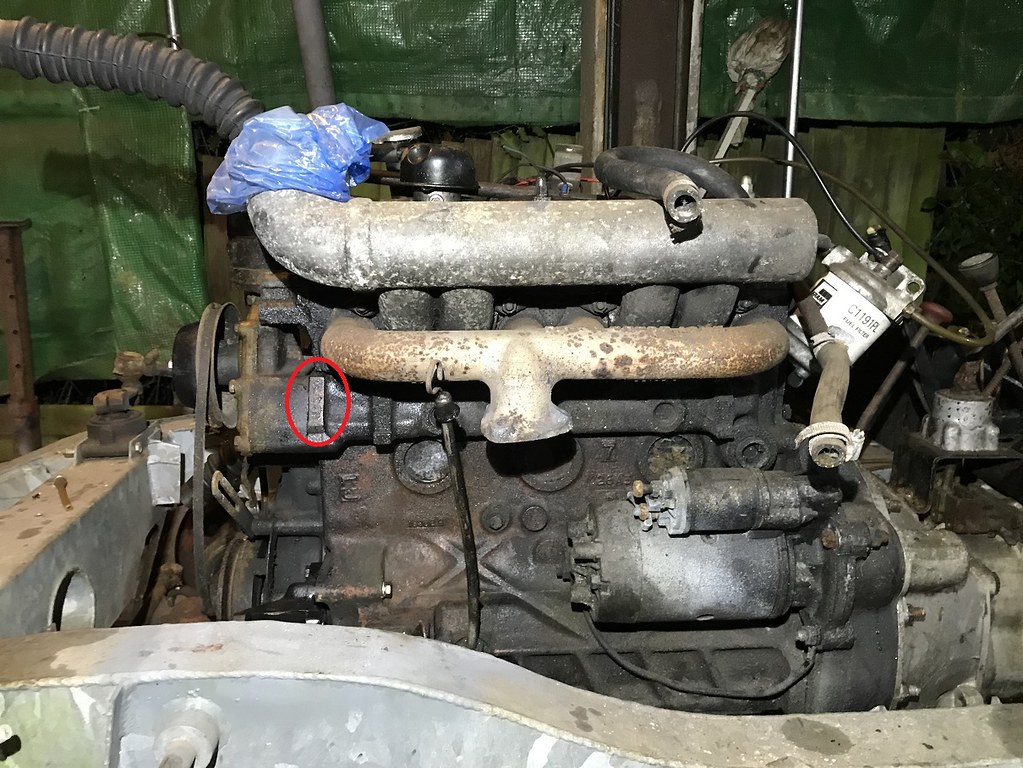Guys, this really isn't that complicated

The engine number IS in the normal place on the plinth at the front of the block under the manifold here:-

I'm only interested because I'm curious and it's an anomaly. I'm rebuilding a Series 2a onto a new chassis, I knew the engine in it wasn't original and was a later upgrade (presumed from a Series 3), so I looked up the engine number to see what sort of engine and what sort of date it was. That's when I found that the engine number it was wearing wasn't in the normal list of engine numbers for the Series 2.25 engines. I haven't posted over several years about this - when I found the number on this engine started 369 I didn't recognise it, couldn't find it and hit Google. Google turned up the old thread on LRUK, so I posted on there to see if the OP had found anything out about the 369 engine that they had. I posted here simultaneously to broaden the potential knowledge base I'm appealing to. I'm sorry, but I don't buy the theory that it had been mis-stamped

particularly now I knew there was someone else who had the same anomaly. Besides which, the serial number was too low on my engine for it to be a mis-stamped 366 made in Jan '83 (as that's when the block was cast). It just didn't add up....
My opinion is that there is a series of factory produced Land Rover 5MB diesel engines out there with factory engine numbers starting 369 that have since been lost to the archives and history records.... I think there is some relevance and importance to documenting that and trying to fill in those historical blanks.
As it happens I've since spoken to Glencoyne and the most likely conclusion is that the 369 engine was probably a FX4R taxi engine series from when the FX4 had the Series 2.25 diesel engine fitted in '83-'84. It makes sense for dates and serial numbers and is the best fit, so far, particularly as my engine also had a belt driven vacuum pump apparently typical of the FX4R application. Given that they weren't particularly successful in the FX4R, there probably aren't many 369 engines left - not that this makes my engine particularly 'special' or 'rare', but is quite interesting.... to me anyway!
With that information as a best guess I am better informed, have potentially gone some way to filling in some blanks in the historical engine number nomenclature and, more importantly, can formulate a plan for this engine in my rebuild project.... Given that there is a strong possibility that it's an ex-taxi engine, there is a good chance it's well worn... I haven't been able to labour it to assess that yet as the vehicle wasn't roadworthy on arrival, so I need to factor that into the rebuild process and potentially budget for a rebuild or possibly even a transplant.... That's something that was previously unknown prior to looking up the engine number.... and THAT'S why it's interesting enough to start posts like this, build the knowledge and share the information


